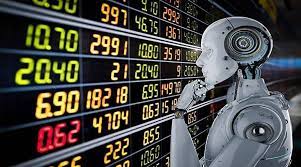
In the ever-evolving landscape of financial markets, traders are constantly seeking ways to optimize their strategies, reduce risks, and maximize profits. One such avenue that has gained significant traction in recent years is the utilization of forex robot. These automated trading systems, powered by algorithms and artificial intelligence, have transformed the way traders interact with the foreign exchange (Forex) market.
What Are Forex Robots?
Forex robots, also known as Expert Advisors (EAs), are software programs designed to automatically execute trades on behalf of traders in the Forex market. These robots are programmed with predefined rules and parameters based on various technical indicators, price action, and market conditions. They can analyze vast amounts of data and execute trades at speeds and frequencies impossible for human traders.
How Do Forex Robots Work?
Forex robots operate based on algorithms that are programmed to identify trading opportunities and execute trades accordingly. These algorithms can be simple or highly complex, depending on the strategy they are designed to follow. Some robots rely on technical analysis indicators such as moving averages, RSI (Relative Strength Index), MACD (Moving Average Convergence Divergence), while others may incorporate machine learning and artificial intelligence techniques to adapt to changing market conditions.
Once activated, a Forex robot continuously monitors the market for signals that match its programmed criteria. When it identifies a favorable trading opportunity, such as a potential buy or sell signal, it executes the trade automatically without requiring any intervention from the trader. This automation eliminates the emotional biases and psychological factors that often influence human traders, leading to more disciplined and consistent trading decisions.
Benefits of Forex Robots
- 24/7 Trading: Forex robots can operate around the clock, taking advantage of trading opportunities in different time zones and markets. This ensures that traders do not miss out on potential profit-making opportunities, even when they are asleep or occupied with other commitments.
- Speed and Efficiency: Forex robots can analyze market data and execute trades within milliseconds, far quicker than any human trader could react. This speed is crucial in a market where prices can change rapidly, allowing traders to capitalize on fleeting opportunities and minimize slippage.
- Emotion-Free Trading: Human traders are prone to emotions such as fear, greed, and hesitation, which can cloud judgment and lead to irrational trading decisions. Forex robots operate based on predefined rules and parameters, free from emotional biases, ensuring disciplined and consistent execution of trading strategies.
- Backtesting and Optimization: Before deploying a Forex robot in live trading, traders can backtest their strategies using historical market data to assess performance and refine their algorithms. This process enables traders to optimize their robots for better risk-adjusted returns and adapt them to changing market conditions.
- Diversification: Forex robots can trade multiple currency pairs simultaneously, spreading risk across different assets and potentially enhancing overall portfolio performance. Additionally, they can implement various trading strategies concurrently, further diversifying risk exposure.
Challenges and Risks
While Forex robots offer numerous advantages, they are not without risks and limitations. Some of the key challenges associated with automated trading include:
- Over-Optimization: Excessive optimization of trading algorithms based on historical data can lead to curve-fitting, where the robot performs exceptionally well in backtests but fails to perform adequately in live trading due to overfitting to past market conditions.
- Technical Failures: Like any software, Forex robots are susceptible to technical glitches, bugs, and connectivity issues that can disrupt trading operations and potentially result in losses.
- Market Volatility: While Forex robots are adept at executing predefined strategies, they may struggle to adapt to sudden and extreme market movements, leading to losses during periods of high volatility or unexpected events.
- Lack of Human Judgment: Despite their advanced algorithms, Forex robots lack the intuition, creativity, and critical thinking abilities of human traders. They may struggle to interpret qualitative factors such as geopolitical events, economic news, or market sentiment that can impact currency prices.
- Broker Dependence: The effectiveness of a Forex robot may be influenced by the quality of the broker’s execution, spreads, slippage, and other factors. Choosing a reliable and reputable broker is essential for the success of automated trading strategies.
Conclusion
Forex robots represent a significant advancement in the realm of algorithmic trading, offering traders the opportunity to automate their strategies and capitalize on market opportunities with speed and precision. While they offer numerous benefits, it’s essential for traders to understand the risks involved and exercise caution when deploying automated systems. By combining the advantages of technology with sound risk management practices and human oversight, traders can harness the power of Forex robots to enhance their trading performance and achieve their financial goals in the dynamic world of foreign exchange.